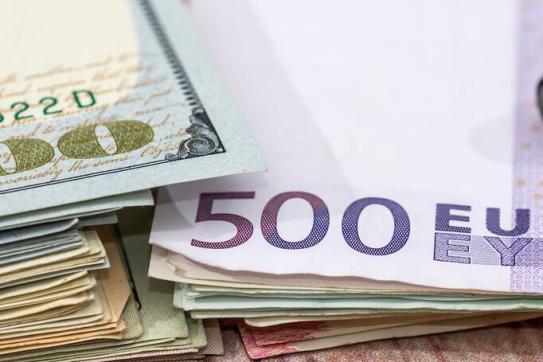Although there is a consensus that the dollar stands alone as the world’s reserve currency, having beaten back the challenge of the euro and, for the time being, outpacing the Chinese renminbi, new research from Assistant Professor of Business Jesse Schreger investigates at the micro-level what this home-currency advantage means for American firms seeking to raise money from international investors.
“There’s only one international currency right now, the US dollar,” says Schreger.
Along with Matteo Maggiori of Harvard University and Brent Neiman of the University of Chicago, Schreger co-wrote “International Currencies and Capital Allocation,” a forthcoming paper in Journal of Political Economy, which elucidates the dominance of the dollar as the world’s reserve currency and the popularity of US bonds among foreign investors.
Schreger and his colleagues acquired data on security holdings from Morningstar, a financial services company, which allowed them to determine with greater accuracy which currencies firms use when they lend across borders.
“Most data used to examine the questions we are interested in is so aggregated that it is difficult to really understand what is happening,” Schreger says. “In other words, if you wanted to get a sense of who is lending to whom around the world, it would be really difficult.”
Using this trove of information, the researchers found that when firms based in one country lend to a firm in another country they overwhelmingly do so in their domestic currency.
“British households invest in pounds, and if you want to borrow from British households you need to issue debt denominated in pounds,” Schreger says. “In a frictionless world, investor home currency preference wouldn’t matter, but we show that is not at all how the world works.”
Schreger’s research shows firms behave as if they face a fixed cost of borrowing in foreign currency, meaning that only the largest firms actually do so.
“If you’re a Canadian firm and you want to borrow in British pounds, it’s typically only the very large companies that issue a foreign currency and you might need a corporate treasury to help you hedge the risk,” Schreger says. “If you have a currency such as the Canadian dollar that foreigners don’t generally own, it means that unless you incur the costs needed to issue in foreign currency, you don’t receive foreign investment, and so your pool of potential lenders is domestic-only.”
Schreger says while it is true that only the largest American firms borrow in foreign currency, unlike firms in other countries, borrowing only in the domestic currency (the US dollar) is less of an impediment for raising foreign financing.
“American companies essentially do not need to change their behavior to cater to international investors,” Schreger says. “Even if they only borrow in dollars they are able to tap international markets, because of the global appetite for the dollar.”
“Our answer to the question of why it matters that the dollar is the international currency is that this dominant position makes it easier for US firms to finance themselves,” Schreger adds. “They don’t have to change their behavior to tap global debt markets.”
The paper also put those findings in a historical context, as Schreger and his colleagues traced the emergence of the euro as a competitor to the dollar.
Soon after its launch in 1999, the euro soon began to play a role in the trade of corporate bonds and bank loans and was used to set prices in international trade, matters that had been near exclusive domain of the dollar since the collapse of the Bretton Woods system in 1971.
“It looked like the euro was going to be a viable rival,” Schreger says. “More cross border corporate lending was still in US dollars, but they were neck and neck.”
The new currency then endured the one-two punch of the 2007-2008 financial crisis and the ensuing sovereign debt crisis, which served to bolster the dollar, despite America’s contemporaneous economic downturn.
“If you’re thinking of a safe asset, a lot of it comes down to what people believe and what they expect,” Schreger says. “The experience of the US during the global financial crisis and the European sovereign debt matter led people to believe that if they held dollars their savings would be safe, regardless of what happened to the world economy.”
Looking to the future, Schreger shares the view that Chinese renminbi is poised to become the dollar’s natural rival, but he says it might not be ready to step out on the world stage just yet.
“Central banks hold some renminbi in reserve, but firms can’t really finance themselves with it and people can’t save in it,” Schreger says. “Until you have those kinds of developments, you don’t necessarily have a rival.”
This research is a part of the Global Capital Allocation Project.
